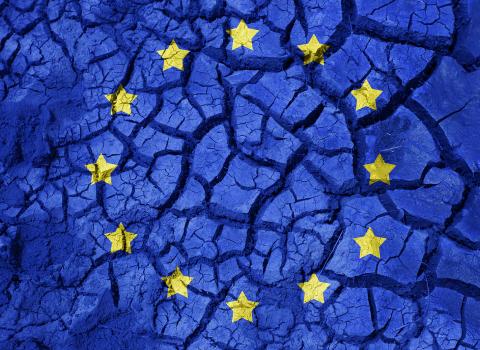
Jan Palmowski, The Guild Secretary General. Photo: The Guild website
The Member States of the EU and the Commission are currently agreeing on the principles, values and policy actions that will give shape to the renewed European Research Area (ERA). This process is an important step in deciding the common direction for national and EU policies and research and innovation for the next decade. It is currently negotiated in the context of the Pact for Research and Innovation, and the emerging consensus between the Commission and the Member States was presented to stakeholders on 20 April.
The Pact reflects the views of the Commission Communication on ERA last September, and the Council Conclusions on ERA that outlined their broad visions for the new strategic framework. The renewed ERA presents a much-needed new direction for European research leadership. Whereas increasing connectivity to other policy areas and Europe’s innovation capacity are important, these cannot be used to sideline the focus from challenges that the research sector is experiencing, and that hold back Europe’s capacity to retain and attract research talent.
It is critical that the Pact’s final version will prominently address the key question that ERA was founded on: how to strengthen Europe’s research capacity. The EU’s emerging approach to a renewed ERA presents research policy primarily as an implementation tool for other EU policies and priorities. With the current pandemic having demonstrated the importance of having a competitive research policy and increasing investments in research, the Pact must recognize the significance of research beyond the impact it has on the economy.
There is still time to re-articulate what a renewed, more ambitious and forward-looking ERA could achieve and to engage in a genuine co-creation with research stakeholders. For this to happen, the ERA Pact for Research and Innovation should include the following elements:
1. Adopting effective measures to boost Europe’s position as a scientific powerhouse and its capacities for research excellence in all Member States.
This requires sufficient base funding for universities and other research performing organisations, as well as competitive funding focusing on supporting bottom-up fundamental research. Increasing investments in these areas will help Europe achieve a leading position as a knowledge society and a global scientific powerhouse, which is a precondition for effective innovation policy and Europe’s ability to understand, prepare for and react to future challenges such as climate change or the coronavirus pandemic.
2. Taking the needs and concerns of the academic community as a starting point for designing more attractive research careers.
Improving the attractiveness of research careers is an important priority that has been addressed by ERA several times in the past decade. Whilst promising openings are emerging from the decision-makers to achieve concrete progress, the proposed ways of addressing research careers fail to make the connection with those instruments that provide leading researchers attractive working conditions in Europe and help to retain talent, such as the ERC and MSCA. Likewise, acknowledging scientific freedom as a core value of ERA should be coupled with sufficient resources for the long-term work of scientists that is driven by their goal of expanding the frontiers of science. This is an essential precondition for the realization of scientific freedom, and a factor that significantly affects the attractiveness of research careers in Europe.
The objective of improving research careers has also opened up a discussion on novel definitions for research excellence. Defining excellence in research should be done through a thorough discussion and consultation with the academic communities to achieve a consensus that is endorsed by decision-makers and researchers. Research and innovation excellence should never be defined through the same parameters. At the same time, the definition of a European approach to reforming research assessment should be done after a consensus has been achieved at the end of the ongoing consultation process, not when it has just started.
3. Ensuring that the eventual ERA governance process fosters improved structures for including the views of the research community.
In the past, ERA as a strategy has been hindered by a lack of awareness of its existence in the research communities in Europe. To avoid a situation where a renewed ERA continues this trend, it is time to acknowledge their instrumental role as the key actors whose contributions will make ERA a reality in the next decade. Therefore, inviting research communities to set the direction for its policies together with the Commission and Member States is a decisive factor in the success of ERA. This will entail inviting representatives of key research actors such as universities to foster a genuine dialogue with the EU institutions. This should be the practice in the beginning of the policy development, ahead of the adoption of new policies and during their implementation to monitor their effectiveness. Since ERA relies on the implementation of priorities at national levels, it cannot succeed in its mission if the dialogue does not happen in parallel in all of the participating countries on a regular, structured basis. This will be a precondition for its effectiveness, outreach and transparency.
The Guild looks forward to the next steps in the process towards creating an ambitious new ERA that empowers decision-makers and the academic community to work together towards common goals, and is ready to engage in a constructive dialogue throughout its implementation to ensure that it will succeed in its missions.
This article was first published on April 27 by The Guild.




 A unique international forum for public research organisations and companies to connect their external engagement with strategic interests around their R&D system.
A unique international forum for public research organisations and companies to connect their external engagement with strategic interests around their R&D system.